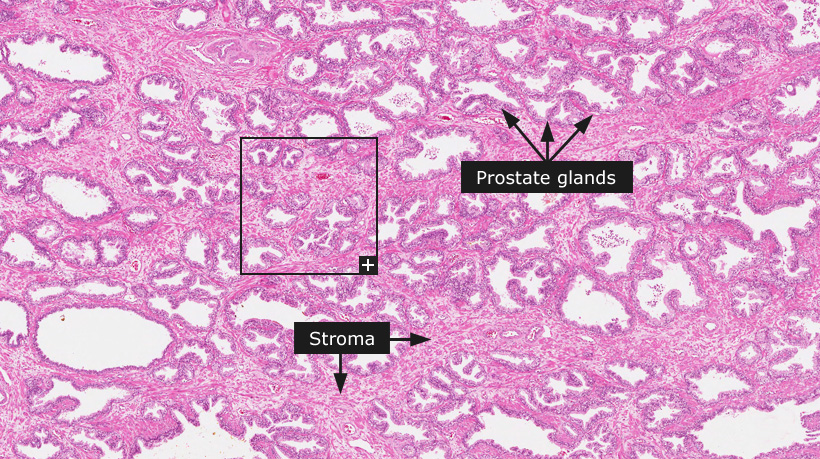Prostate

Prostate
The biological role of the prostate is to slowly accumulate and on occasion rapidly eject small volumes of fluid, which forms a component of semen necessary for normal reproductive function of the male. The normal human prostate is a composite organ that includes both prostatic glands and a non-glandular stroma. These different tissues are tightly fused together and surrounded by a common capsule. The prostate is composed of four distinct glandular regions where the peripheral zone comprises 70% and the central zone 25% of the prostate mass. The glandular component of prostate is composed of ducts and acini, which are morphologically identical and both appear to function as dispensable reservoirs. The entire duct-acinar system is lined by a pseudostratified columnar epithelium with secretory cells. The size and structure of these glandular elements are distinctly different in the different zones of the prostate. As with other glandular organs, the secretory cells throughout the prostate are separated from the basement membrane and stroma by a layer of basal cells. The non-glandular components of the prostate include the pre-prostatic sphincter, fibro-muscular stroma, capsule and also supplying blood vessels and nerves. The specific fibro-muscular stroma is composed of large compact bundles of smooth muscle cells that are arranged in a random orientation and often separated by bands of dense fibrous tissue.
Cancer: Prostate cancer
|